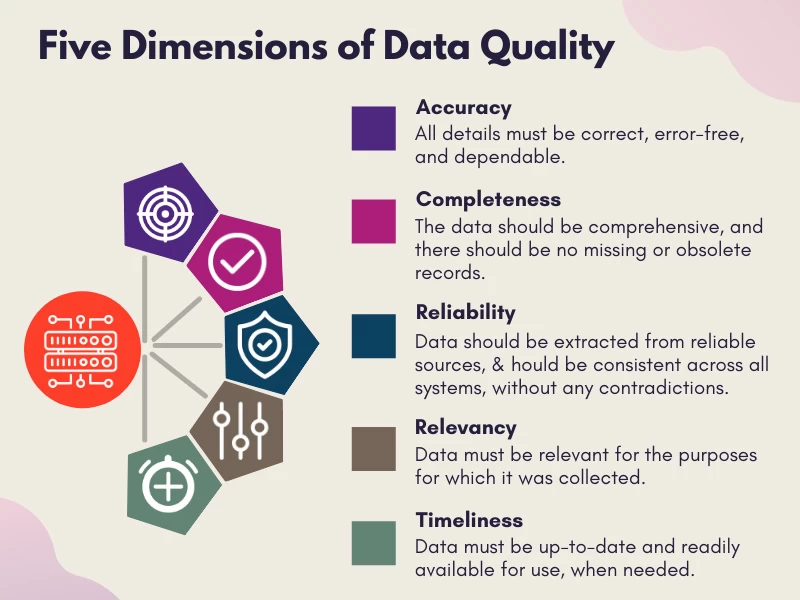Addressing Data Quality Issues in Student Research Projects|2025
Addressing Data Quality Issues in Student Research Projects is crucial for reliable results. Discover strategies to improve data accuracy, consistency, and validity in academic research.
Data quality plays a pivotal role in the success of research projects, particularly in the academic sphere. Poor data quality can compromise research findings, resulting in flawed conclusions that may mislead stakeholders or distort academic discourse. For student researchers, addressing data quality issues is a critical skill that ensures the integrity of their work. This essay explores how students can identify, address, and resolve data quality issues in research projects, providing practical examples and solutions.
Understanding Data Quality Issues
What Are Data Quality Issues?
Data quality issues refer to problems or deficiencies in datasets that render them incomplete, inaccurate, inconsistent, or unreliable. These issues can arise during data collection, entry, storage, or analysis. Common data quality issues include:
- Missing Data: Absence of data points that are essential for analysis.
- Inconsistent Data: Variations in data formatting or recording methods.
- Duplicate Data: Repetition of the same data points.
- Outliers: Data points that deviate significantly from the norm.
- Incorrect Data: Errors resulting from faulty data entry or collection.
Importance of Addressing Data Quality Issues
High-quality data is essential for reliable and valid research outcomes. Addressing data quality issues ensures that findings are robust and reproducible. For student researchers, it also reinforces the credibility of their work and develops critical thinking skills necessary for their academic and professional careers.
Identifying Data Quality Issues
Common Methods for Detecting Issues
- Exploratory Data Analysis (EDA): Techniques like summary statistics, visualization (e.g., histograms and scatter plots), and descriptive measures help uncover anomalies.
- Validation Rules: Checking data against predefined rules (e.g., range checks) ensures consistency.
- Correlation Analysis: Identifying unexpected relationships or patterns can flag potential errors.
- Metadata Review: Assessing data documentation for inconsistencies or missing details can reveal data quality issues.
Example: Identifying Issues in Student Research
Consider a student conducting research on the relationship between exercise and academic performance. Upon reviewing the dataset, they find several problems:
- Missing values for students’ exercise frequency.
- Duplicate entries for some participants.
- Outliers, such as a participant reporting 100 hours of exercise per week.
These issues highlight the need for thorough data review before analysis.
Addressing Data Quality Issues
Data Cleaning Techniques
- Handling Missing Data:
- Imputation: Replace missing values with the mean, median, or mode.
- Removal: Exclude records with excessive missing data if their exclusion does not bias the results.
- Resolving Inconsistencies:
- Standardize formats (e.g., converting dates to a uniform format).
- Use automated scripts to align data entries.
- Removing Duplicates:
- Use software tools like Excel or Python to identify and eliminate duplicate entries.
- Managing Outliers:
- Verify the authenticity of outliers.
- Apply statistical methods to adjust or remove extreme values if they are errors.
Example: Cleaning Data in a Research Project
In the exercise and academic performance study, the student applies the following steps:
- Imputes missing exercise data using the median value.
- Removes duplicate records based on unique identifiers.
- Adjusts outliers by capping extreme values to the 95th percentile.
Data Quality Issues in Data Mining
Data mining involves extracting patterns from large datasets, making data quality paramount. Common issues include:
- Noisy Data: Random errors or variances in data.
- High Dimensionality: Datasets with too many variables, complicating analysis.
- Imbalanced Data: Unequal representation of classes in classification problems.
Solutions for Data Mining
- Noise Reduction: Use smoothing techniques like binning, clustering, or regression.
- Dimensionality Reduction: Apply techniques like Principal Component Analysis (PCA) to reduce variables.
- Resampling: Use methods like oversampling or undersampling to balance class distributions.
Example: Addressing Data Mining Issues
A student analyzing social media data for sentiment analysis encounters noisy text data. They address this by:
- Removing irrelevant words and characters (e.g., emojis).
- Applying stemming or lemmatization to standardize terms.
- Balancing sentiment categories using resampling techniques.
How to Fix Data Quality Issues
Problem Statement for Data Quality
“The integrity of the dataset used in this research is compromised by missing values, inconsistencies, and outliers. These issues hinder the reliability of results and necessitate systematic data cleaning and validation techniques.”
Steps to Fix Data Quality Issues
- Assess Data Quality: Conduct an initial evaluation to identify problems.
- Develop a Cleaning Plan: Outline specific techniques to address identified issues.
- Automate Processes: Use tools like Python, R, or specialized software to streamline cleaning tasks.
- Document Changes: Maintain detailed records of data cleaning steps to ensure transparency.
- Validate Results: Reassess the cleaned data to confirm improvements.
Example: Fixing Issues in a Thesis Dataset
A graduate student’s thesis on customer satisfaction in retail involves survey data with several errors. They:
- Identify missing responses and use mean imputation.
- Correct formatting inconsistencies in date fields.
- Remove entries with identical timestamps, indicating duplication.
The final dataset is validated through EDA to ensure accuracy and consistency.
Preventing Data Quality Issues
Best Practices
- Design Robust Data Collection Methods: Ensure surveys or tools are well-tested and clearly designed.
- Train Data Collectors: Equip individuals handling data with the necessary skills.
- Use Reliable Tools: Leverage verified software for data entry and storage.
- Monitor Data Continuously: Regular audits help detect and address issues early.
Example: Preventative Measures in Student Projects
In a group project on urban traffic patterns, students implement:
- Pre-tested GPS tracking apps to ensure accurate data collection.
- Regular team meetings to discuss data handling protocols.
- Automated scripts to flag anomalies in real time.
Conclusion
Addressing data quality issues in student research projects is essential for producing reliable and impactful results. By understanding common problems, employing effective cleaning techniques, and implementing preventative measures, students can enhance the integrity of their work. Whether in data mining, surveys, or experimental research, maintaining high data quality is a skill that benefits students academically and professionally. Through consistent application of these practices, student researchers can ensure their contributions to knowledge are both credible and valuable.
Needs help with similar assignment?
We are available 24x7 to deliver the best services and assignment ready within 3-4 hours? Order a custom-written, plagiarism-free paper




